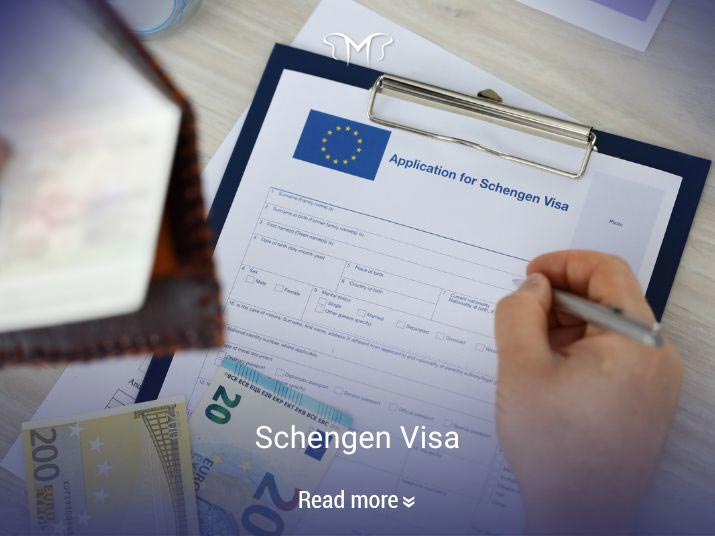
Unlock the Fastest Path to Your Schengen Visa: Essential Tips and Insights for 2024
Schengen! Many of us have probably heard of the Schengen visa, and it is a dream for many Iranians to obtain this type of visa. But what is a Schengen visa, and why do so many people want to have it? In the following, we will discuss the types of Schengen visas, their costs, the steps to obtain them, and more.
What does Schengen mean?
In response to the question "What is Schengen?" it should be said that Schengen refers to a region in Europe where, based on a formal agreement, 29 member countries have removed their internal borders so that eligible citizens can travel freely and without restrictions to other countries in this area. If you are a citizen or hold a passport and residence card of one of the Schengen countries, you can travel freely among these countries without needing a visa. The Schengen visa acts like a golden ticket that allows you to easily travel to various countries such as Germany, France, or Spain. This freedom to travel to multiple countries is one of the reasons why having a Schengen visa is so valuable.
Types of Schengen Visas
If you also intend to obtain a Schengen visa, you should know that the Schengen visa is divided into different types depending on the length of stay:
Type A Schengen Visa
This visa is specific to airport transit and allows the holder to stop at one of the airports in the Schengen area and then continue their journey to their final destination. This visa is valid at all airports in the Schengen region but does not allow the individual to leave the airport or enter the Schengen member countries. If you need a visa to pass through more than one airport in the Schengen area, the Type A visa will not be suitable. In this case, you should apply for a Type C Schengen visa, as flights between several airports in the Schengen area are considered domestic flights and require a Type C visa. Additionally, if you intend to change flights from one airport to another within the Schengen area, the Type A transit visa will not suffice, and you will need to obtain a Type C visa.
Type B Schengen Visa
The Type B visa is used for transportation and transit purposes and is essentially a transit visa that, along with a passport, allows the holder to travel by car or train through several Schengen countries within a maximum of 5 days and continue their journey to a country outside this area. In special cases, if your journey continues the next day by train or plane and requires an overnight stay in a hotel, you will need to leave the international transit area and enter the Schengen area, which will require a transit visa. This visa is suitable for trips that last less than five days, and for this reason, the traveler must leave the designated country after this period. The holder of this transit visa can travel through the Schengen area by car or train for up to 5 days and then leave the area.
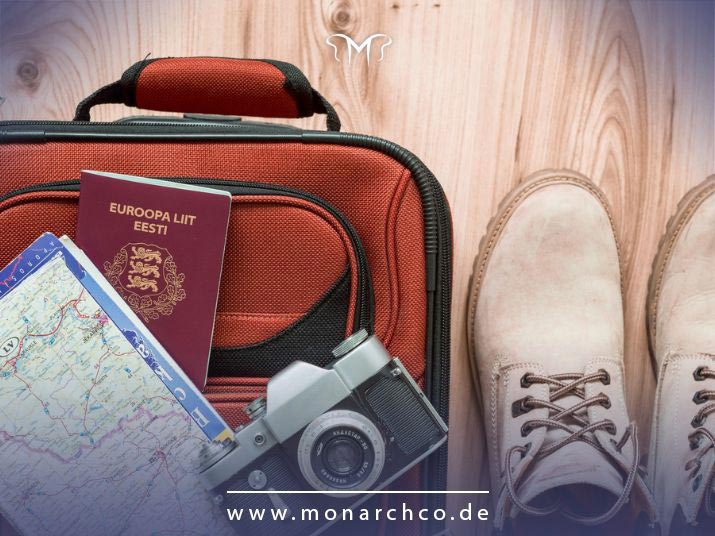
Type C Schengen Visa
The Type C visa allows the holder to stay in the Schengen area for 90 days within a 180-day period. This visa can be issued as a single entry, double entry, or multiple entry visa. This type of visa, which is one of the most popular Schengen visas, provides short-term stays for travelers who intend to visit the region for tourism, visiting family and friends, or participating in various events. This visa is divided into three categories:
1. Single-Entry Schengen Visa: The holder of this visa is permitted to enter the Schengen area only once. After leaving this area, the visa becomes invalid, even if the validity period has not expired. If the number "1" is indicated in the "Number of Entries" section of the visa, it means the holder is allowed to enter the Schengen countries only once.
2. Double-Entry Schengen Visa: This visa allows the holder to enter the Schengen area twice within a 180-day period. This means that the traveler can visit the Schengen area twice before the visa expires.
3. Multiple-Entry Schengen Visa (Multi): This visa, known as a "Multiple-entry" visa, allows the holder to enter the Schengen area multiple times. With this visa, the individual can stay in Schengen countries for up to 90 days every six months. The visa will have a label "Number of Entries MULT."
Type D Schengen Visa
This visa is suitable for individuals who intend to stay in the Schengen area for an extended period due to reasons such as studying, working, or living. In addition to the previously introduced Schengen tourist visas, the Type D or National Visa is issued for business and study purposes. This type of visa is designed for long-term stays and is divided into two categories: single-entry and multiple-entry. The types of this visa are as follows:
Single-Entry Type D Schengen Visa: This type of visa is issued to individuals who intend to stay in one of the Schengen countries for short-term needs such as receiving medical treatment. This visa is issued as a single-entry, and after the intended period, the individual must return to their home country.
Multiple-Entry Type D Schengen Visa: Holders of this type of visa can travel repeatedly to all Schengen countries without needing to obtain another visa. Applicants for this visa include the following groups:
-
Athletes, artists, and professionals traveling to the Schengen area to showcase their skills.
-
International students traveling to this area for scientific or research projects lasting less than a year.
-
Individuals traveling to Schengen countries for work or research at reputable institutions (their personal and family background will be reviewed).
-
Individuals unable to leave the Schengen area due to medical emergencies.
-
Students planning to undertake research or educational courses in one of the Schengen countries; this visa is valid for one year and can be extended.
What are the conditions for obtaining a Schengen Visa?
In 2024, the European Union introduced new regulations for obtaining a Schengen visa. Applicants must meet specific conditions to receive this visa, and failure to do so will result in their application being rejected. The most important conditions for obtaining a Schengen visa are:
Bank Statement and Financial Sufficiency
Applicants must provide their bank account statement for the past six months. Visa officers review the average inflow and outflow of your account to determine if you have sufficient financial means to cover your stay and daily expenses in the Schengen area. This demonstrates your ability to fund your travel without requiring assistance from others.
Setting a Clear Travel Purpos
It is crucial to clearly define the purpose of your trip to the Schengen area. This helps the case officer make a more informed decision about granting the visa. For example, if your goal is tourism, including a detailed travel itinerary with information on the countries you plan to visit can help support your visa application.
Providing Complete Documentation, Travel History, and Age Considerations
Submitting complete and valid documents is one of the fundamental requirements for obtaining a Schengen visa. European embassies tend to be stricter with single individuals under 30 years old who have no previous travel history to Europe. Additionally, having a travel history to other reputable countries, especially a previous Schengen visa, can increase your chances of getting a visa.
Valid Invitation Letter or Previous Schengen Visa History
Having a valid invitation letter from an individual or organization in the Schengen area or having a history of a Schengen visa in the last five years are factors that can enhance your chances of obtaining a visa. These elements demonstrate that you have credible connections and a trustworthy travel history.
To obtain a Schengen multi-entry visa, according to Article 21(5) of Regulation 810/2009 (Visa Code), you must also meet the following conditions:
-
Justifiable Reason for Repeated Travel: Your repeated or regular travels must have logical and justifiable reasons that the visa officer can approve.
-
Reliable Travel History: A valid and transparent travel history to various countries, including holding different valid international visas, shows your reliability.
-
Acceptable Financial Status: Your financial situation in your home country must be strong and acceptable, proving your ability to cover travel and accommodation costs.
-
Intent to Leave the Schengen Area Before Visa Expiry: You must be able to prove that you intend to leave the Schengen area before your visa expires. This intent must be reasonable and documented to convince the visa officer.
Schengen Visa Application Process
1.Determine the Type of Visa and Travel Purpose
At the beginning of the process, you need to determine what type of visa you require. Types of visas include tourist, student, work, business, visiting family and friends, scientific, and sports or cultural activities visas. Defining the purpose of your trip and the type of visa you need will help you proceed with the visa application process more effectively and quickly.
2.Select the Destination Country
After determining the type of visa, you need to specify which Schengen country you intend to travel to. If you are traveling to only one country, you must apply through the embassy or visa center of that country. If you plan to travel to several Schengen countries, you should submit your application to the embassy of the country where you will spend the most time. If your stay in different countries is equal, submit your application to the embassy of the first country you will enter.
3. The right time to apply for a visa
Timing is very important when submitting a visa application. It is best to apply for a visa at least three months before your travel date. Applying early gives you the assurance that you will have enough time to address any issues that may arise. The minimum recommended time to apply for a visa is 15 days before the trip, but it is advisable to apply at least three weeks before the trip.
4. Booking an embassy appointment
After specifying your destination and visa type, you must schedule an interview appointment at the embassy of the country in question. In some embassies, it is possible to book an appointment online, while in others, you may need to visit in person.
5. Completing the visa application form
Obtain the visa application form from the embassy's website or in person, and complete it carefully. All sections of the form must be filled out completely. Print two copies of the application form and sign both copies.
6. Gathering the required documents
The required documents include a valid passport, two color photos, travel insurance, round-trip flight reservation, visa application form, proof of accommodation, and financial documents. The destination country's embassy may also request additional documents, which you must prepare and submit.
7. Attending the interview
Attend the embassy on the specified date and participate in the interview. During the interview, the consular officer will ask you questions about the purpose of your trip, accommodation, and travel details. Your answers should be honest and consistent with the information you provided in the application form.
8. Paying the visa fee
The visa fee varies depending on the type of visa and the applicant's status. This fee is paid at the time of the visa application and is non-refundable if the application is denied.
9. Waiting for the result
After completing the above steps, you must wait for the response to your application. The visa application review process usually takes up to 15 days, but this duration may be extended depending on various conditions. Finally, the result of your application will be announced within 15 to 30 working days.
Visa Receipt: If your application is approved, you will be notified via SMS or email, and you can receive your visa.
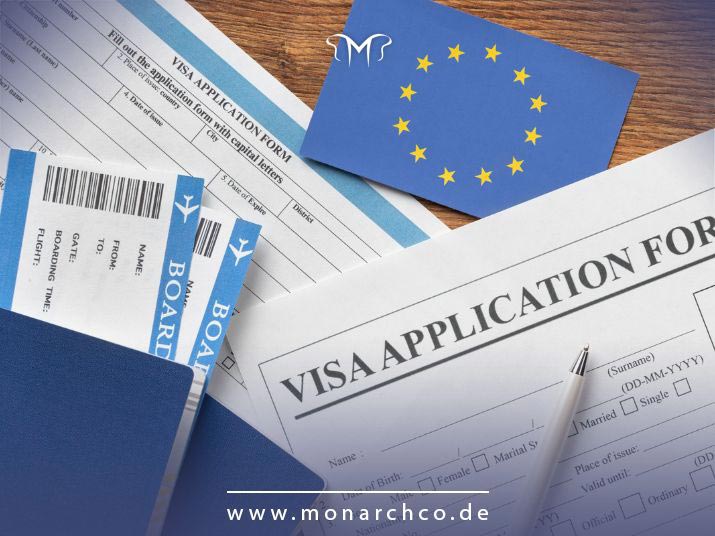
Required Documents for Schengen Visa
To obtain a Schengen visa, you need to provide the following documents. The documents must be carefully and up-to-date to avoid potential issues:
Visa Application Form:
- The Schengen visa application form must be fully and accurately completed and submitted separately for each applicant.
Passport Photos:
- Two biometric color photos with a white background, 4 × 3 cm in size (for a tourist visa) or 3.5 × 4.5 cm (for other visas), full face and recent.
Passport:
- Current passport with at least 6 months of validity from the end date of travel and at least two blank pages.
- Previous passports (if available) and copies of important pages.
Identification Documents:
- Original and copy of birth certificate.
- National ID card.
Financial Documents:
- Bank account statement for the last three months with a minimum balance of 30 million Tomans (for a Spanish visa, a 6-month statement is required), in English and stamped and signed by the bank.
- Bank account balance certificate with international affairs verification. Bank guarantee for the return trip.
- Original and translated property deed (if available).
Employment and Occupational Documents:
Government jobs:
- Introduction letter from the workplace stating the job title, original insurance list, and the last three salary slips, employment decree, or retirement card.
Private sector jobs:
- Business license, operating license, activity certificate, commercial card, and company registration and change notices.
Doctors:
- Clinic license, valid medical system card, employment decree, last three salary slips.
Lawyers:
- Bar license. Retirees: Latest retirement decree and recent salary slip.
Non-Governmental Occupations:
-
Employment certificate with job title and salary details.
-
Social security insurance records.
-
Recent three salary slips.
Travel Documents:
-
Round-trip flight ticket.
-
Hotel reservation confirmation (voucher) or an invitation from friends or relatives if staying at their home, along with a copy of the host’s passport, ID card, and proof of their residence in the Schengen area.
Travel Insurance:
-
International travel insurance with a minimum medical coverage of €30,000 and coverage for COVID-19 for Schengen countries.
Documents Related to the Purpose of the Trip:
-
Documents justifying the purpose of the trip and a detailed travel itinerary.
Documents for Individuals Under 18:
-
Birth certificate.
-
Notarized consent letter from one parent if traveling with one parent or without parental accompaniment.
Documents for Spouses:
-
For housewives, original and translated documents of the spouse’s occupation and financial status (completion of personal details form).
Additional Documents:
-
Notarized consent letter for children under 18 traveling without parental accompaniment or with one parent.
-
Completion of personal and family information forms separately for each applicant.
-
Attendance for fingerprinting (for individuals over 12 years old).
Visa Fee:
-
Between €120 and €250 for Schengen visa application and ancillary fees.
Additional Documents for Business Visas:
-
Invitation letter from a reputable company in the Schengen area.
-
Contracts, paid invoices, and other documents demonstrating your professional relationship.
-
Annual report and other documents showcasing the company's business activities.
Note:
-
All documents must be translated by an official translator into the language required by the embassy and submitted on the day of fingerprinting.
-
Additionally, the biometric data of the applicants must be registered in the European Visa Information System (VIS); otherwise, re-fingerprinting at the embassy will be required.
Schengen Visa Fee:
-
The cost of a Schengen visa varies depending on the type of visa and the destination you choose. Here, we provide a brief explanation of different costs and specific conditions.
Standard Fees:
-
Adults (13 years and older): 80 euros (approximately 90 USD) plus biometric center fees.
-
Children (6 to 12 years): 40 euros (approximately 45 USD) plus biometric center fees.
-
Children under 5 years: Free.
Fees Based on Destination:
-
Countries such as Greece, France, Netherlands, and Spain: 300 euros.
-
Countries such as Italy and Germany: 400 euros.
-
Countries such as Poland: 600 euros.
Discounts for Certain Countries: If you are a citizen of one of the following countries, the visa fee is reduced to 35 euros (approximately 41 USD):
-
Albania
-
Armenia
-
Azerbaijan
-
Bosnia and Herzegovina
-
Cape Verde
-
North Macedonia
-
Georgia
-
Moldova
-
Montenegro
-
Serbia
-
Russia
-
Ukraine
Additional Costs: Biometric center fees are added to the above costs.
Fee Exemptions:
-
Students and educators for study and training courses.
-
Researchers for scientific research.
-
Representatives of NGOs and charities under 25 years old participating in organizational events.
-
Family members of European citizens under specific EU regulations.
Note: If you cancel your visa application or if your application is rejected, the fee paid will not be refunded. For national and long-term visas, it is recommended to contact the relevant embassy's consulate to get the exact fee information.
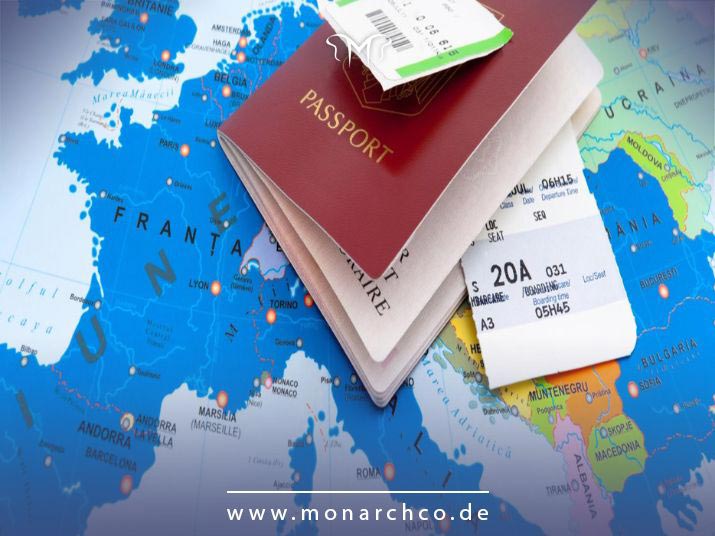
Schengen Visa for Which Countries?
The Schengen visa is valid for 27 European countries. These countries include:
-
Austria
-
Hungary
-
Belgium
-
Czech Republic
-
Denmark
-
Estonia
-
Finland
-
France
-
Germany
-
Greece
-
Netherlands
-
Slovenia
-
Iceland
-
Norway
-
Poland
-
Portugal
-
Slovakia
-
Spain
-
Sweden
-
Switzerland
-
Malta
-
Italy
-
Latvia
-
Liechtenstein
-
Croatia
-
Lithuania
-
Luxembourg
Easiest Countries to Obtain a Schengen Visa
Currently, Schengen countries have stricter visa issuance requirements, and you need to provide complete documentation, including proof of financial means and a clean criminal record. Generally, Spain, due to its relative flexibility, might be a better option for applying for a visa, especially for first-time applicants. It is also recommended to increase your chances by joining group tours. For travel to countries like Switzerland and France, having a good travel history can be helpful.
Most Difficult Countries to Obtain a Schengen Visa in 2024
Some countries, such as France, Austria, Germany, and the Netherlands, have tough conditions for issuing visas to Iranians:
-
France: Generally does not issue visas to first-time applicants (those who have not traveled abroad before).
-
Germany: Due to high asylum applications, the conditions for obtaining a visa have become very strict, and without an invitation letter, the chances of obtaining a visa are almost zero.
-
Austria and the Netherlands: Strong and valid financial documents are required for these countries.
Therefore, before applying for a Schengen visa, it is better to carefully review the conditions and requirements of each country.
Schengen Visa Status Inquiry
In general, tracking the status of a Schengen visa issuance by travel agencies or directly by the applicant is not possible. After submitting the visa application at the embassy or consulate, you need to wait for the approximate processing time, which is usually between 2 weeks to 1 month, for the final response.
If you have chosen the SMS tracking option when applying for the visa, you will receive an SMS with the acceptance or rejection result of your visa application to the phone number you provided on the visa application form. Additionally, if you have filled in the email section of the visa application form, information regarding the status of your visa tracking will be sent to you via email.
Reasons for Schengen Visa Rejection
Obtaining a Schengen visa can face issues for various reasons. These problems may include:
-
Criminal Record: Any criminal record, even if minor, can lead to a visa rejection.
-
Fake or Incomplete Documents: Using fake documents or providing incomplete documentation can easily result in visa rejection. This includes employment, financial, and identity documents.
-
Invalid Passport: Passports with less than 6 months of validity or that are damaged cannot be accepted for visa applications.
-
Low Financial Means: Failure to provide sufficient financial documents demonstrating your ability to cover travel and accommodation costs can result in rejection.
-
Invalid Travel Insurance: Not providing valid travel insurance with adequate coverage for the duration of the trip.
-
Invalid Identification Documents: Providing invalid or incomplete identification documents.
-
Unacceptable Invitation Letter: An invitation letter identified by the embassy as unacceptable.
-
Insufficient Explanation of Travel Purpose: Failure to provide sufficient and convincing explanations regarding the purpose and itinerary of the trip.
-
Lack of Proof of Return to Country: Failure to provide convincing reasons for returning to the home country after the trip.
-
Unacceptable Employment Documents: Providing employment documents that do not align with your income or are falsified.
-
Suspicious Bank Account: If a bank account is suddenly filled shortly before the visa application, the embassy officer may view it with suspicion.
-
Young Age and Marital Status: Applicants under 30 traveling alone may have a lower chance of receiving a visa, especially if there is no proof of intent to return to their home country.
-
Invalid Accommodation Documents: Failure to provide valid documents for hotel reservations or accommodation rentals.
-
Unsatisfactory Visa Status: An illogical travel plan and inconsistency with the provided documents.
Important Notes:
-
Fake Documents: Using fake documents usually results in visa rejection.
-
Criminal Record and Passport Issues: Any criminal record or passport problems can be problematic.
-
Financial Capability and Travel Insurance: Financial documents and travel insurance must be valid and sufficient.
-
Employment and Accommodation Documents: Employment documents should match your income, and accommodation documents should be valid.
If your visa application is rejected, you may not be able to apply for a Schengen visa for a while, so it is important to provide all documents correctly and completely.
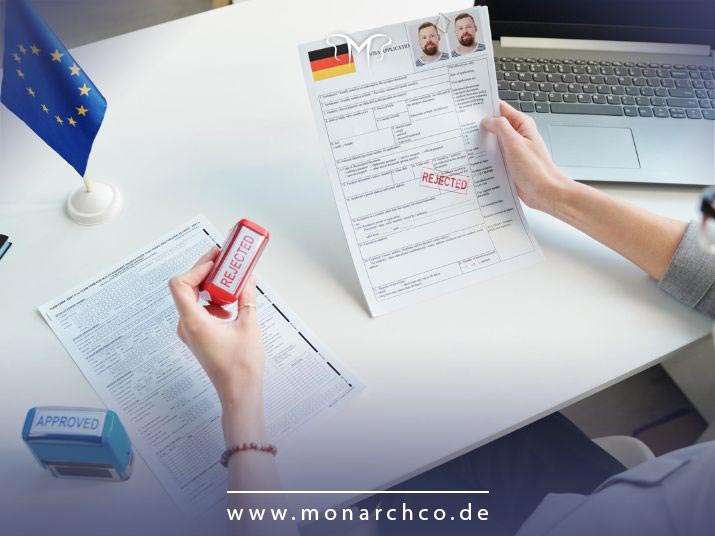
Addressing Schengen Visa Rejection
If your Schengen visa application was rejected for reasons mentioned, you can take actions to address the rejection. Here are the necessary steps:
-
Appeal Deadline: You usually have 1 to 2 months to appeal the visa decision.
-
Send Appeal Letter: To appeal, you must send an official letter via email to the embassy of the destination country, explaining the reasons for the rejection.
-
Proof of Ties to Home Country: If the rejection was due to uncertainty about your return to your home country, you need to provide documents such as property deeds, employment records, and other valid documents to show that you have ties to your country and will return after the visa period ends.
-
Rectify Deficiencies: If your application was rejected due to incomplete documents, you should correct these deficiencies and submit new, complete documents.
-
No Appeal: Not appealing the visa decision means accepting the rejection, which will be recorded as a negative mark on your file.
-
Reapply for Visa: If you decide to reapply for a visa, it is recommended to wait 1 to 2 years from the date of the previous rejection and also consider joining a group tour to increase your chances of success.
By following these steps, your chances of overcoming the rejection and obtaining a Schengen visa will improve.
Fastest Way to Obtain a Schengen Visa
The Schengen visa is divided into various types such as tourist, work, study, and sponsorship visas. Among these, the sponsorship visa is usually the fastest way to obtain a visa. If you have immediate family members in Schengen member countries who hold citizenship or permanent residency, you can apply for a sponsorship visa by receiving an invitation from them. The inviter must meet the following conditions:
-
Sufficient financial resources: The inviter must be able to financially support you during your stay.
-
Identity and address documents: The inviter must provide identity details and proof of residence. With a valid invitation from these relatives, the process of obtaining a Schengen visa is usually faster and easier.
Common Questions in the Schengen Visa Interview 2024
The Schengen visa interview is not just about submitting documents; your behavior and responses also significantly impact the outcome of your visa application. Familiarity with common interview questions can better prepare you for the interview day. Some of these questions include:
-
What is your marital status? What does your spouse do for a living?
-
Why do you need a three-month visa? Could you shorten your trip?
-
Who are you traveling with?
-
What is the purpose of your visit to our country?
-
Do you have any children? How old are they, and what do they do?
-
Do you have any friends, relatives, or acquaintances in our country?
-
If you are traveling for study or research, how did you become acquainted with the college you intend to attend?
-
Do you have the financial means to cover your expenses during your stay?
-
What guarantees can you offer that you will return to your country?
Additional questions may be asked during the interview, such as details about your job, the people you live with, or who will manage your company in your absence. You might even be asked, "Why should we believe you will return to your country before your visa expires?" It's best to be prepared for any possible question.
Benefits of the Schengen Visa
The Schengen visa offers numerous benefits to its holder. It allows you to travel to 27 European countries that are part of the Schengen Area without needing a separate visa. The validity period of a Schengen tourist visa allows you to stay in this region for 90 days within a 180-day period. In addition to tourist travel, the Schengen visa provides opportunities to attend international conferences and exhibitions. Simply present the relevant invitation letter to obtain your Schengen visa. Another important advantage of the Schengen visa is that it allows you to work in one of the member countries of this area. To do so, you must receive a job offer from a European employer and meet other necessary conditions. The length of your stay in the destination country will also depend on the duration of your work contract. The Schengen visa also offers special services to those seeking medical treatment in Europe. After negotiating with a hospital in the desired country and preparing the necessary medical documents, you can apply for a Schengen visa.
Schengen Visa Evaluation
The process of reviewing and approving a Schengen visa is divided into two main stages. The first stage includes reviewing and preparing the documents before sending them to the embassy, and the second stage involves the review of documents at the embassy of the desired country.
In general, from the moment the final documents are submitted to the embassy and the administrative procedures are completed, it takes about 3 to 4 weeks for the visa to be evaluated and issued.
Schengen Visa Validity
When it comes to the validity of a Schengen visa, two concepts are often confused: the visa validity period and the number of permitted days of stay. Generally, the validity of a Schengen visa is 6 months, while the allowed stay within this period is 90 days. For example, if a Schengen visa is issued on September 1st, the visa holder can enter the Schengen Area until the end of February of the following year (180 days). This 180-day period is the visa validity. However, within this period, the person is allowed to stay in Schengen countries for a maximum of 90 days and must leave the Schengen Area before the end of this 90-day period. If a person has no prior experience traveling to the Schengen Area, the code on their visa will be 1. This means the person is only allowed one entry into the Schengen Area, and the permitted stay is limited to 15 days instead of 90 days.


